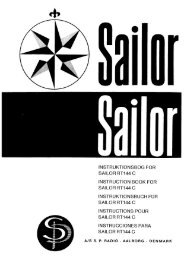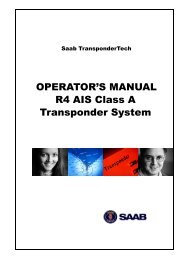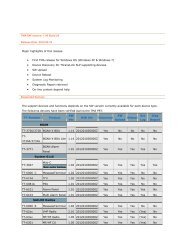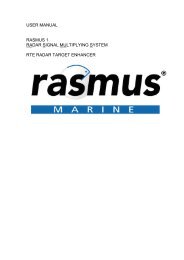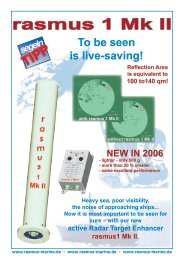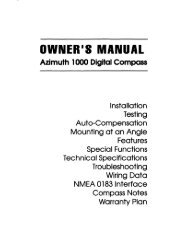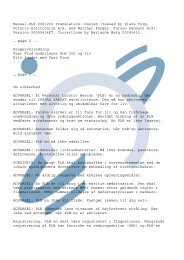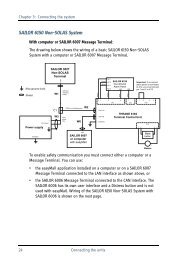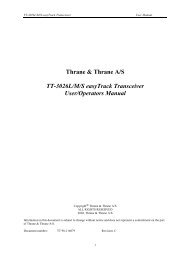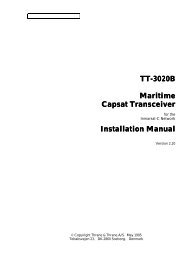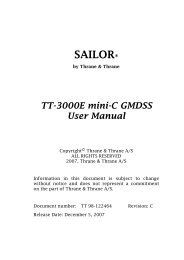Overview of Compass Technology - KVH Industries, Inc
Overview of Compass Technology - KVH Industries, Inc
Overview of Compass Technology - KVH Industries, Inc
Create successful ePaper yourself
Turn your PDF publications into a flip-book with our unique Google optimized e-Paper software.
Accelerations, either in the conventional sense or associated with dramatic vibrations or platform<br />
instability, may impair the magnetic sensor's ability to remain oriented with the earth's horizontal field.<br />
Fluid filled compass sensors and electronic averaging can minimize the effects <strong>of</strong> acceleration, but to<br />
some degree all magnetic compasses tend to be sensitive to dramatic pitch, yaw and roll. In highly<br />
dynamic conditions, a rate gyro may be used to complement the magnetic compass providing short term<br />
rate <strong>of</strong> change information to complement the accurate long term information provided by the electronic<br />
compass.<br />
3.3.3.3 "Northerly Turning Error"<br />
One peculiar phenomenon associated with compass instability and directly related to dip angle is known<br />
as "Northerly Turning Error", which occurs when the compass senses the vertical component <strong>of</strong> the earth's<br />
field as opposed to the horizontal. The geometry in the northern latitudes <strong>of</strong> the dip angle is such that this<br />
problem is particularly troublesome heading in a northerly direction in northern latitudes, when the<br />
compass will <strong>of</strong>ten fail to indicate a turn because the acceleration <strong>of</strong> the turn provides the compass with<br />
vertical field information which corresponds with the direction before the turn. Northerly Turning Error<br />
may be easily remedied with the addition <strong>of</strong> a rate gyro to the system to complement the compass with<br />
short term turning information.<br />
3.4 Summary <strong>of</strong> the Limits <strong>of</strong> Geomagnetism as a Directional Reference<br />
Generally, most <strong>of</strong> the surface <strong>of</strong> the earth is covered by a magnetic field which is relatively consistent<br />
and predictable enough to associate with a specific direction. The two primary concerns where the earth's<br />
field might not be a good indication <strong>of</strong> direction are those geographic areas where the horizontal<br />
direction-related component <strong>of</strong> the field is too weak to accurately measure, or those areas where<br />
unpredictable magnetic interference from manmade or natural environmental objects distort the local<br />
magnetic field in an unpredictable manner.<br />
4 The Nature <strong>of</strong> Magnetism and Magnetic Materials<br />
Aside from the inconsistencies in the earth's magnetic field which create challenges in determining<br />
direction, the magnetic characteristics or deviation <strong>of</strong> the host platform must be taken into consideration,<br />
as they will distort the local magnetic field. The most common oversight <strong>of</strong> product designers in<br />
specifying a magnetic compass sensor for a particular application is not considering the sensor's ability to<br />
correct for the host platform's deviation. The meaningful advancements in compass design are not those<br />
which make compasses more accurate in the free field <strong>of</strong> the laboratory, but those which make compasses<br />
more accurate after installation in their final application. To fully understand the implications <strong>of</strong> deviation<br />
on successful compass design, it is useful to review materials which might distort the earth's magnetic<br />
field.



